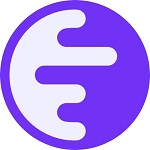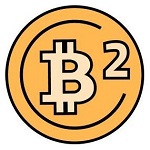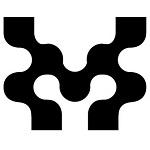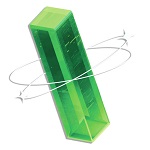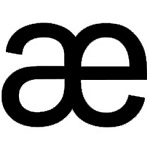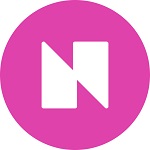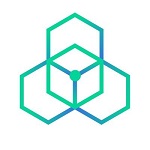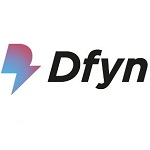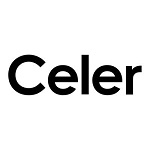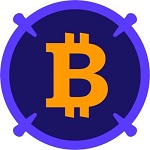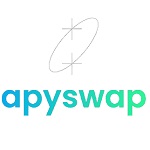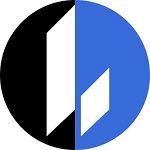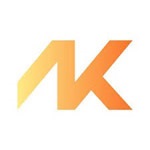Layer-2
| Projects | Description | Interest lvl | ||
|---|---|---|---|---|
Base is a low-cost, secure Ethereum L2 designed to bring the next billion users on-chain. | ||||
Celo is the core utility, reserve, staking, and governance asset for the Celo platform. The platform aims to make financial tools borderless, easy to use, and a ... | ||||
Optimism is focused on the development of optimistic rollups, which are scaling layers that aggregate transactions above the base Ethereum layer. The idea is th ... | ||||
Polygon (POL) is a protocol and a framework for building and connecting Ethereum-compatible blockchain networks. Polygon 2.0 is a concrete vision to build the V ... | ||||
zkSync is a trustless protocol for scalable low-cost payments on Ethereum, powered by zkRollup technology. It uses zero-knowledge proofs and on-chain data avail ... | ||||
Arbitrum is a layer-2 solution project designed to enhance Ethereum smart contracts in terms of speed scalability while adding additional privacy features to bo ... | ||||
Scroll is a security-focused scaling solution for Ethereum, using innovations in scaling design and zero knowledge proofs to build a new layer on Ethereum. The ... | ||||
StarkNet is a permissionless decentralized ZK-Rollup. It operates as an L2 network over Ethereum and solves the inherent problems of blockchains – scalability ... | ||||
Immutable X is Ethereum’s first zero-knowledge rollup (zk-rollup) scaling protocol for gas-free NFT minting and trading, built in partnership with StarkWare. | ||||
BitDAO aims to use its significant financial and talent resources to foster and invest in innovation, collaboration, and growth across DeFi. | ||||
Ink is a layer 2 blockchain built on the Optimism Superchain, focusing on providing fast, secure, and interoperable financial solutions. | ||||
Unichain is a DeFi-native Ethereum L2, built to be the home for liquidity across chains. | ||||
Zircuit is a zero-knowledge rollup that's fully EVM-compatible, enhancing Web3 capabilities. It features a hybrid architecture combining zero-knowledge proofs w ... | ||||
Succinct is a performant, open-source zero-knowledge virtual machine (zkVM) that verifies the execution of arbitrary Rust (or any LLVM-compiled language) progra ... | ||||
Abstract is a consumer-focused Layer-2 blockchain. | ||||
Humanity Protocol is a network aimed at providing sybil-resistant blockchain solutions to authenticate the first billion users on the web. It offers developers ... | ||||
Zora is a scalable Layer 2 built on Ethereum, prioritizes NFTs and media over traditional DeFi applications, enabling fast and cost-efficient transactions. The ... | ||||
Swell Network is a permissionless, non-custodial, and liquid ETH staking protocol that is built for stakers, node operators, and the Ethereum ecosystem. A commu ... | ||||
MegaETH is an EVM-compatible blockchain that brings Web2-level real-time performance to the crypto world for the first time. MegaETH goal is to push the perform ... | ||||
Bsquared (B²) Network is an EVM-compatible Rollup built on zero-knowledge proof verification commitment on the Bitcoin blockchain. Rollup data and zk proof ver ... | ||||
Movement Labs is a blockchain network that prioritizes community involvement, characterized by its transparent tokenomics, minimal staking requirements aimed at ... | ||||
Aligned Layer, deeloped by Yet Another Company, is a ZK verification layer built atop the EigenLayer. Aligned Layer platform facilitates cost-effective verifica ... | ||||
Aevo is a decentralized derivatives exchange platform, focused on options and perpetual trading. The DEX runs on Aevo L2, an Ethereum roll-up based on the OP St ... | ||||
Plume Network is a Layer 1 blockchain platform designed to integrate real-world assets into the blockchain. It supports diverse asset investments, including art ... | ||||
Blast is the L2 that helps you earn. Blast is the first L2 that incorporates native yield. Your balance on Blast compounds automatically.Funding Rou ... | ||||
Story Protocol is a protocol that aims to create, manage, and license new intellectual property on the blockchain. It seeks to democratize intellectual property ... | ||||
Neon Labs is an Ethereum virtual machine on Solana that enables dApp developers to use Ethereum tooling to scale and get access to liquidity on Solana. | ||||
Taiko is an Ethereum Layer 2 scaling solution designed to be the premier rollup for Ethereum. It aims to become the default scaling choice for developers and us ... | ||||
zkLink is a trading-focused multi-chain L2 network with unified liquidity secured by ZK-Rollups. zkLink ecosystem connects various L1 chains and L2 networks tha ... | ||||
Manta Network is a decentralized project that delivers plug-and-play privacy for the entire DeFi stack. Built as a layer-1 protocol, the project leverages zkSNA ... | ||||
Fuel Network is the fastest modular execution layer written on Sway language delivering high security and flexible throughput. Today, Fuel is the trying to be t ... | ||||
Lisk is a Layer 2 (L2) blockchain network built on the Optimism (OP) Stack, designed to enhance Ethereum's scalability and efficiency. By operating as an optimi ... | ||||
Dfyn is a multichain AMM DEX currently functional on the Polygon network. Dfyn nodes on various chains act as liquidity entry and exit points into the cross-cha ... | ||||
Celer Network is a leading layer-2 scaling platform that enables fast, easy and secure off-chain transactions for not only payment transactions, but also genera ... | ||||
We are helping create their own decentralized businesses on blockchain. | ||||
The Universal Layer-2 DeFi Protocol for Cross-Chain Derivatives Trading. | ||||
ZKCHAOS is a layer2-based anonymous transaction protocol and a fair game platform, which is built to enhance privacy for all kinds of cryptocurrency. | ||||
BTC Proxy Protocol - Layer-2 Interoperability of BTC and DeFi. | ||||
APYSwap is a protocol for the decentralised exchange of shares of Tokenized Vaults. It achieves this through the creation of a Layer 2 blockchain where users ca ... | ||||
Lighter is a perpetual trading protocol based on Ethereum. It is a specialized zk-rollup that utilizes cryptographic methods and data structures to ensure scala ... | ||||
Radius is a project dedicated to providing an economic growth engine for Rollups in the Ethereum ecosystem. Its core product, Lighthouse, is a decentralized net ... | ||||
Blazpay offers an all-encompassing crypto financial solution platform. | ||||
zkVerify is a specialized blockchain network designed for the efficient verification of zero-knowledge proofs (ZKPs). | ||||
MagicBlock is a network built on top of Solana for developing open, decentralized games and consumer applications. It enhances Solana’s capabilities while mai ... | ||||
OpenZK Network is a Layer 2 solution based on Zero-Knowledge Rollup (ZK Rollup) technology, designed to address the scalability, cost, and performance limitatio ... | ||||
Capx AI is a platform that merges artificial intelligence (AI) with blockchain technology, aiming to empower developers and users to build, monetize, and trade ... | ||||
Etherlink is a decentralized & EVM compatible Layer-2 blockchain built on Tezos. | ||||
Immortal Rising 2 is a role-playing game (RPG) set in a dark fantasy world incorporating blockchain technology and Web3 elements. It is a sequel to the original ... | ||||
Session is a decentralized encrypted messaging app. | ||||
Orochi Network is a cutting-edge zkOS (operating system applying zero-knowledge proof) designed to tackle the challenges of computation limitation, data correct ... | ||||
What is Layer 2 Blockchains
Layer 2 Solutions or L2 blockchains – these are infrastructure solutions in the form of applications and various software built on top of basic blockchains. They can process large volumes of transactions and reduce the load on the main network…
Most of the leading DeFi or NFT protocols in the ecosystem support Layer 2 solutions, and project developers are working on integrating them. Some new services are already using Layer 2 solutions at launch, skipping the development phase on the Ethereum base network.
The reason for the popularity Layer 2 solutions is simple: everything that users can do on Ethereum can be done with L2 solutions, spending hundreds of times less on network commissions. At the same time, the reason for the increased confidence in the technology lies in the unconditional support and advertising by the Ethereum Foundation and Vitalik Buterin personally. Vitalik quite often writes about the development of L2 solutions, which makes additional advertising for the projects. For example, he most often speaks positively about one particular project – Polygon.
How it works
Layer 2 blockchains are an important complement to the underlying L1 blockchain, providing increased scalability and performance. They utilize a variety of technologies and methods to achieve these goals and provide a wide range of options for developers and users.
The fact is that the above challenges are key needs of basic Layer 1 blockchain systems. Also, this problem is summarized in the term “Blockchain Scalability Trilemma”. It consists of the difficulty of creating a network that is simultaneously fast, decentralized and secure. Therefore, developers often have to select and optimize a maximum of two components out of three.
The architecture of the first blockchains, such as Bitcoin or Ethereum, is not designed from the outset to handle huge flows of users and transactions. Therefore, these ecosystems have the problem of low throughput. For example, BTC has 5-7 transactions per second (TPS), while ETH has an average of 15 TPS.
Example L2 blockchain solutions
- Lightning Network: Is a Bitcoin scaling system that is one of the solutions to the problem of its limited throughput. It allows for almost instant transfers of coins with minimal fees.
- Optimistic Rollups: To group multiple transactions together, then process and verify them on the core blockchain.
- Plasma: Framework for creating nested blockchains that are children of the main Ethereum blockchain. It processes transactions on child chains, with the results periodically committed to the main chain.
- zkSync: Enables the Zero-Knowledge Rollup mechanics. This solution allows the Ethereum network to be highly scalable while maintaining its security.
Ultimately, L2 solutions can provide a partial but significant solve to the problems of low bandwidth and high fund transfer fees without breaking the underlying blockchain code. And a key benefit of Layers 2 is the ability to transfer digital assets between L1 blockchain participants and L2 participants, which can be in the form of a separate protocol or blockchain.
Let’s consider several Layer 2 solutions for the Ethereum system.
Despite its low speed, ETH is the most heavily loaded resource for decentralized applications. Its ecosystem hosts the lion’s share of projects in the areas of DeFi NFTs and many others. Therefore, the problem of scalability is especially acute for Ethereum.
From a technical point of view, the classification of L2 solutions is complex and multifaceted. For a basic understanding, we can distinguish three groups:
- Optimisitc Rollups, among the most recognizable protocols of which are Polygon, Optimism and Arbitrum.
- The second group includes zkRollups with Zero knowledge (ZK) technology. The most popular projects are Loopring (LRC), zkSync and the Aztec anonymous transaction network.
- The third category includes those projects that use network sidechains and various combinations of several technologies and networks. For example, the Parastate protocol works by communicating with the Polkadot blockchain and allows the use of the popular languages Rust, Golang and C++ for application development.
Another way to increase the throughput of a blockchain is horizontal data partitioning or sharding. This is the division of a data set into multiple databases. Blockchain sharding is the division of a single chain into individual independent segments called shards. Each shard contains a unique set of smart contracts and account balances. Each shard is assigned a node for validation, thus distributing the load across several validators.
The main feature of sharding is the transition from a system where a node calculates every operation to a model where it only performs some calculations. This allows for parallel processing of different tasks. This division of the blockchain into more manageable segments increases throughput. As a result, sharding helps to avoid network congestion and reduce transaction fees.
It is worth noting that sidechains may not always be a direct L2 solution. For example, in Cosmos or Polkadot. In these cases, while Cosmos uses its own security system, Polkadot relies on the “parent” blockchain for security.
Advantages of Layer 2
Key Features of Layer 2 Blockchains:
- Scalability: One of the main aspects of Layer 2 blockchains is the ability to increase the number of transactions processed without having to change the underlying L1 blockchain protocol. This is achieved by moving some of the transactions to Layer 2.
- Performance: Layer 2 blockchains offer faster transaction processing speeds and lower transaction fees. This makes them more efficient for microtransactions and other performance-intensive operations.
- Technology diversity: There are several different technologies and methods that can be used in Layer 2 blockchains, including sidechains, state channels, plasma or rollups. Each of these technologies has different characteristics and applications in different scenarios.
Conclusion
Layer 2 solutions play an important role in the development of the blockchain industry, providing the necessary scalability and performance to support more users and complex applications. As these technologies mature, we can expect further improvements in efficiency and cost reductions not only for Ethereum, but for most other blockchain platforms as well.











